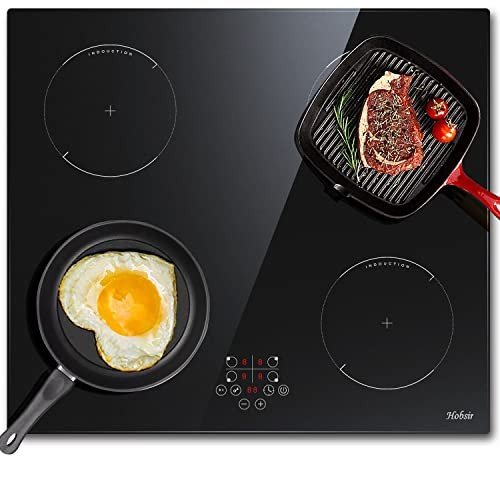Understanding Hobs and Ovens: A Comprehensive Guide for Cooking Enthusiasts
The kitchen is typically considered as the heart of the home, where cooking developments come to life. 2 essential elements of any kitchen are the hob and the oven. While they are both important for cooking and cooking, many homeowners may not fully understand the distinctions, functionalities, and various types offered in the market today. In this article, we will explore these devices in information, assisting you make informed choices for your cooking needs.
Table of Contents
- What is a Hob?
- 1.1 Types of Hobs
- 1.2 Benefits of Different Hob Types
- What is an Oven?
- 2.1 Types of Ovens
- 2.2 Benefits of Different Oven Types
- Selecting the Right Hob and Oven for Your Kitchen
- Often Asked Questions (FAQs)
- Conclusion
What is a Hob?
A hob, frequently understood as a cooktop, is a cooking surface area that you position pots and pans on to prepare food. It includes a variety of heating aspects and is frequently set up on counter tops. In contemporary kitchen areas, hobs can be found in various styles, technologies, and functionalities.
1.1 Types of Hobs
There are numerous kinds of hobs offered in the market:
| Type | Description |
|---|---|
| Gas Hob | Uses burner for cooking, using precise temperature level control. |
| Electric Hob | Operates utilizing electrical heating aspects, frequently seen in strong or radiant types. |
| Induction Hob | Uses magnetic fields to heat pots and pans straight, promoting energy performance. |
| Ceramic Hob | Features a smooth glass top, utilizing electric coils below the surface. |
| Solid Plate Hob | Standard electric hobs with exposed metal plates that warm up. |
1.2 Benefits of Different Hob Types
Gas Hobs:
- Quick cooling and heating.
- Visual flame control for accurate cooking.
Electric Hobs:
- Even heating; ideal for simmering and boiling.
- Easy to clean up, especially flat surface areas.
Induction Hobs:
- Energy-efficient as just the pot warms up.
- Security functions, such as automatic shut-off.
Ceramic Hobs:
- Attractive looks with a smooth finish.
- Even surfaces for easy cleansing.
Solid Plate Hobs:
- Cost-effective and resilient.
- Excellent for basic cooking needs.
What is an Oven?
An oven is a kitchen appliance used for baking, roasting, and broiling food. Ovens can be standalone units or built into kitchen cabinets, providing numerous cooking methods that can enhance or transform ingredients.
2.1 Types of Ovens
Comparable to hobs, there are multiple types of ovens, each with its advantages:
| Type | Description |
|---|---|
| Traditional Oven | Operates with heating components, best for baking. |
| Stove | Uses fans to circulate hot air, cooking food uniformly and quickly. |
| Microwave Oven | Cooks food using electro-magnetic radiation; suitable for reheating. |
| Steam Oven | Uses steam to cook food, protecting moisture and nutrients. |
| Wall Oven | Built into the wall, providing benefit and visual appeal. |
2.2 Benefits of Different Oven Types
Conventional Ovens:
- Simple to use without any complex settings.
- Versatile for different cooking approaches.
Convection Ovens:
- Faster cooking times due to air flow.
- Enhanced browning and crisping for baked goods.
Microwave Ovens:
- Quick cooking or reheating of food.
- Energy-efficient for low-volume cooking.
Steam Ovens:
- Health-conscious cooking that retains nutrients.
- Exceptional for baking bread and cooking vegetables.
Wall Ovens:
- Convenient positioning; saves area.
- Less bending required to access cooking dishes.
Choosing the Right Hob and Oven for Your Kitchen
When selecting a hob and oven, aspects such as space, cooking style, and personal choices should be thought about. Here's a basic guide to assist you pick:
Factors to Consider
- Cooking Needs: Evaluate your cooking habits. Do you often bake, or is stovetop cooking more common?
- Space Availability: Measure your readily available kitchen area. Some hobs or ovens may need more space than others.
- Fuel Type: Decide between gas and electric, based upon schedule and personal preferences.
- Spending plan: Determine what you're prepared to spend and find options within that variety.
Quick Tips
- Focus on Efficiency: Look for energy-efficient models to minimize long-term costs.
- Read Reviews: Explore user reviews to gather opinions on efficiency and dependability.
- Seek advice from Professionals: Seek guidance from kitchen design professionals when planning your layout.
Often Asked Questions (FAQs)
1. What is Oven And Hobs For Sale between a hob and an oven?
A hob is a cooking surface usually for stovetop cooking, while an oven is an enclosed space utilized for baking, roasting, and broiling food.
2. Can I use any pot on an induction hob?
No, induction hobs require magnetic pots and pans. Stainless steel and cast iron pots work, but non-magnetic materials like aluminum won't.
3. How do stove differ from conventional ovens?
Stove use fans to circulate hot air for even cooking, whereas standard ovens do not have this feature.
4. Is it possible to have both a hob and oven as a single unit?
Yes, there are range cookers that integrate a hob and an oven within one device, offering a detailed cooking solution.
5. How do I clean my hob and oven?
The majority of hobs and ovens have actually recommended cleaning approaches depending upon their materials. It is a good idea to speak with the manufacturer's directions for the best practices.
Comprehending the differences in between hobs and ovens is vital for anybody seeking to enhance their kitchen space or enhance their cooking skills. By understanding the various types, their advantages, and how to select the ideal ones for your requirements, cooking can end up being a more satisfying and efficient experience. Whether you are an experienced chef or a beginner cook, the right combination of hob and oven can elevate your culinary developments to new heights.

